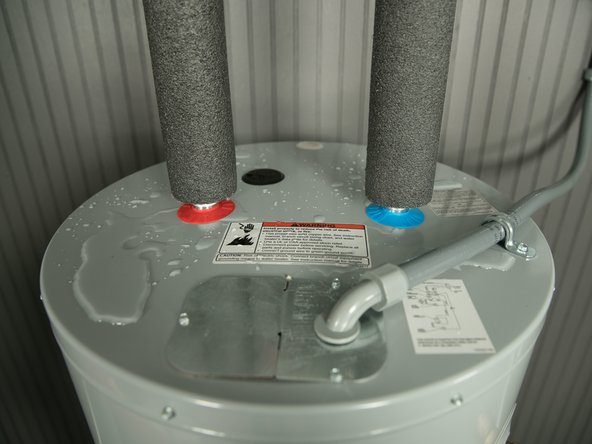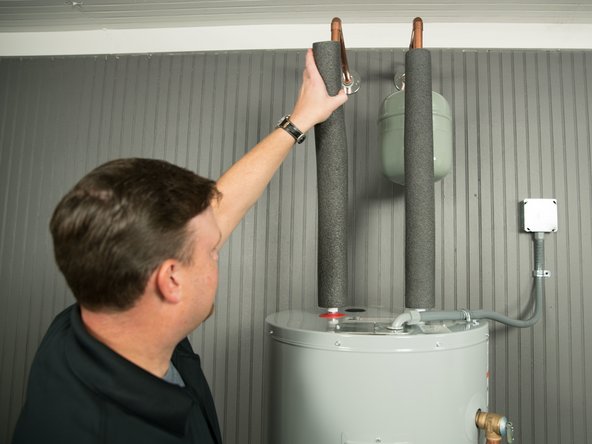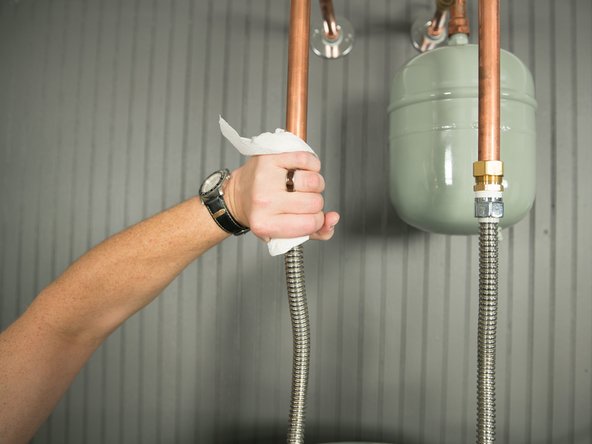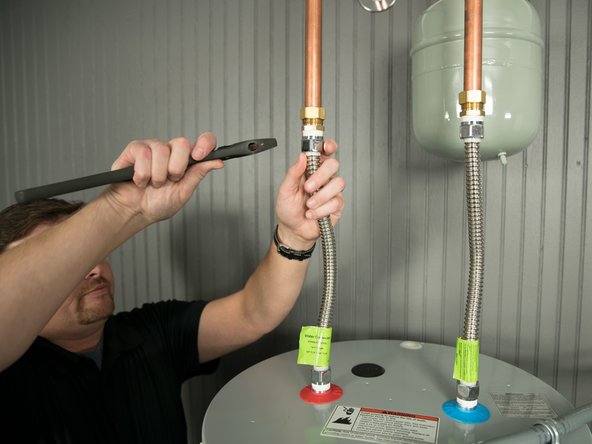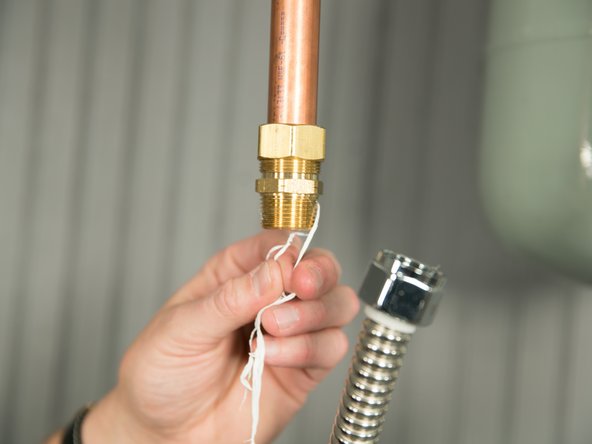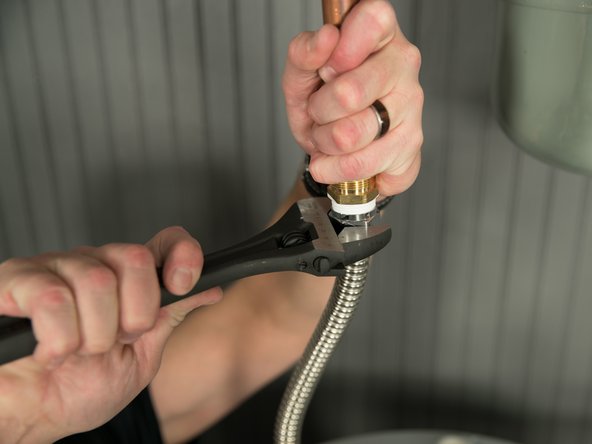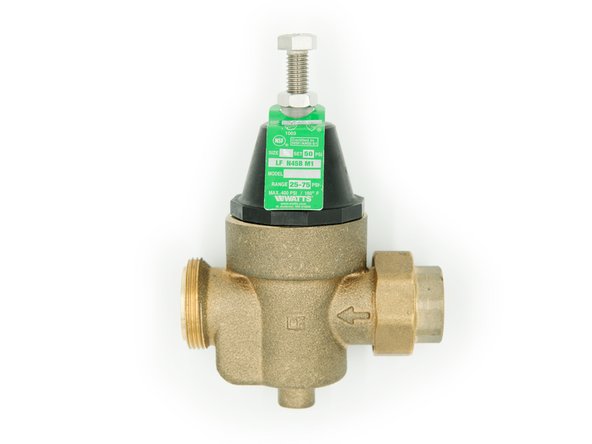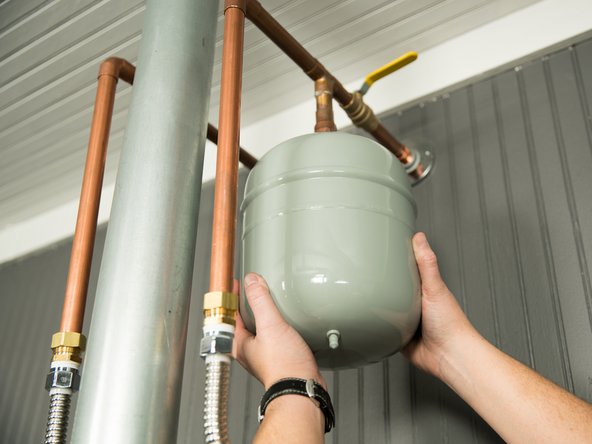Introduction
Many water heater leaks are caused by leaks at fittings and connections that can be fixed.
The information on this web site is supplemental to the printed instructions that came with your water heater. To reduce the risk of property damage, serious injury or death, read and follow all labels on the water heater and the safety instructions in the printed owner's manual.
-
-
Pipe joint compound or plumber's tape
-
Paper towels or shop rags
-
Wrench
-
Pressure reducing valve
-
Thermal expansion tank
-
-
-
Before checking for leaks, turn the power OFF at the circuit breaker (or remove fuses).
-
WARNING! Working on an energized circuit can result in severe injury or death from electrical shock.
-
-
-
To more easily identify where a leak is coming from, dry up any drips using paper towels.
-
-
-
Remove the insulation from the water pipes, if present.
-
-
-
Using a fresh, dry paper towel, press the paper towel against the inlet and outlet connections and check for water droplets or moisture.
-
-
-
If the paper towel gets wet, try tightening the hot and cold water connections.
-
-
-
In some cases, you may have to turn the water off and remove the threaded connection.
-
-
-
Clean the threads and gaskets.
-
-
-
Reapply pipe joint compound or plumber's tape, if used.
-
-
-
Re-tighten the threaded connections.
-
-
-
Drips coming from the T&P discharge pipe often mean the home's water pressure is too high.
-
Plumbing codes allow a maximum of 80 psi. A Pressure Reducing Valve is required to reduce the water pressure.
-
Pressure Reducing Valves are usually set at the factory to 50 psi. However, they are adjustable.
-
-
-
In many cases, a Thermal Expansion Tank is often needed to stop drips from the T&P valve.
-
Replacing the T&P valve almost never stops the drips because T&P valves rarely fail and drips from the T&P valve are almost always due to high water pressure and thermal expansion.
-
See Maintenance section for information about Pressure Reducing Valves and Thermal Expansion Tanks.
-
-
-
If you can't identify the source of the leak, get help from a qualified person. Turn the electric power and the water supply valve OFF.
-
Click on "More Help" below.
-






